The Rise of Predictive Analytics in Business Decision Making
In today’s competitive world, making informed decisions in an organization is pivotal. It helps businesses identify trends and make better decisions. Therefore, it is crucial to adapt to the current business competition as many new cutting-edge ideas are manifested in the market. Predictive analytics has, therefore, risen and has enabled organizations to predict market trends and customers’ behaviour to a level that was unheard of in the past. This technology, which is based on trend analysis and probability theory, is revolutionizing the decision-making processes of organizations. In this way, not only can businesses predict market developments, but they can also increase the efficiency of their remote and current planning and provide customers with better benefits.
What is Predictive Analytics?
Therefore, predictive analytics is the process of utilizing data, statistical procedures, and other methods of machine learning to determine the probability of future occurrences learned from historical records. While descriptive analytics considers prior results and diagnostic results seek to identify factors that led to previous results, predictive analytics addresses what results will occur in the future. It combines information obtained from several sources and generates models that show possible future behaviours.
Predictive analytics is becoming increasingly important and valuable in organizations. This indicated how crucial predictive analytics are in today’s business world. Since markets are now much more unstable and customers’ requirements change often, the economy requires effective tools. Predictive analytics provides an opportunity to define solutions to problematic situations and possible gains before they occur so functional instead of emergent strategies can be established. Also, when applying predictive analytics with Azure Synapse Analytics in businesses can help explore data analysis easily. We at Nettyfy Technologies use Azure’s powerful analytics tools combined with AI and ML methods to help businesses predict the future and accomplish their goals.
Anticipating Market Trends
The most crucial issue for competitive advantage is the ability to predict future trends by having more information. It enables businesses to estimate potential trends that could gain popularity in the market. For instance, in the retail business, it is possible to estimate the consumers’ demand for specific merchandise and manage the stocks throughout the chain so that a company does not find themselves in a situation where they have no stock of a certain item or they have too much of a certain item. This is also important to retailers as they are able to study customers’ tendency to purchase specific products, enabling them to make the proper marketing and stocking decisions.
Enhancing Customer Experience
The concept of personalization is at the centre of today’s customer approaches. Marketing intelligence means that companies can specifically target markets and products that reflect a customer’s choice and patterns.
Based on analyzing customer opinion and interaction with the firm, companies can also predict some problems on the customers’ side and solve them before they degenerate, resulting in increased customer satisfaction and leading to loyalty.
Optimizing Operational Efficiency
It is also important to note that with the help of predictive analytics, work processes can be optimized. This allows companies to do the necessary maintenance before a breakdown happens and thus spares them more time and money on repairs. Likewise, logistics companies employ predictive analytics to come up with the best routes and timing, therefore enhancing the company’s operations and, at the same time, helping to bring down the costs of doing business.
Employing Predictive Analytics in the Healthcare Insurance Industry
The strength of predictive analytics is its efficiency and effectiveness in analyzing big data collections. It can discover trends in data that an individual would not be able to discover quickly. Hence, the predictive analytics tool can analyze various forms of data and generate probability estimates of the occurrence of certain situations.
This means that instead of guessing a company’s performance based on a hunch, organizations are able to use predictive analytics to make decisions. Such an analysis is useful in helping organizations understand previous events and incorporate this knowledge into present and future decision-making for efficient problem-solving.
Algorithms such as those containing machine learning allow for the application of predictive analytics and the discovery of a pattern between different parameters and outcomes so that the right decisions can be made and the desirable outcome can be predicted.
Further, predictive analytics can help businesses identify new opportunities by uncovering trends in large datasets that may have previously been overlooked, enabling them to make data-driven decisions quickly and accurately.
Also, predictive analytics enables organizations to discover new sales growth opportunities by analyzing large volumes of data that may have gone unnoticed and providing fast, efficient, and accurate solutions to such organizational problems.
Implementing Predictive Analytics
Predictive analytics will reap big for any business, but it is key to understand that applying this technology means that a business needs to undertake some serious planning and strategy throughout the whole process. Here are some key considerations for businesses looking to leverage predictive analytics
Data Quality and Integration
The reliability of any forecast is greatly influenced by input data. Organizations need to be certain that the information they acquire and use is valid, exact, and appropriate. Also, it is important to combine data from multiple sources, including customers’ reports, sales records, and market insights, to create complete predictive models. Therefore, also by integrating big data with predictive analytics can transform various industries by allowing more informed and data-driven decisions.
Selecting the Proper Tools and Strategies
It is also imperative to specify that there is a vast scope of tools and methods that can be used in predictive analytics, from simple statistical techniques to complex machine learning approaches. This, however, shows that businesses have to select the right tools depending on the business and the type of data that it handles. It can be helpful to consult the specialists who deal with data science or analytics and follow their recommendations regarding the choice of tools and techniques.
Ethical Considerations
Several ethical issues arise due to the use of predictive analytics, especially concerning the collection and use of data. Businesses are obliged to treat customers’ information appropriately and avoid using algorithms that will reinforce prejudice or discrimination. An organization should act in a way that customers trust and follow laws so they do not face legal challenges.
Summing Up:
The intensive adoption of big data and business analytics is reshaping managerial decisions by offering robust forecasting information on how the future will look. Hence, using historical records and sophisticated data analytics computation, business organizations can predict change, improve their customers’ experience, and increase efficiency. With the development of technology, new applications will be developed and implemented, so the opportunities for providing a competitive advantage will be enlarged as well. We at Nettyfy Technologies offer businesses new possibilities for more effective and less risky networking in the constantly changing world.
We have a team of skilled AI and ML specialists who can create sophisticated Azure data analytics solutions by utilizing AI, ML, and other cloud services. We work with companies to provide analytics solutions designed to meet their unique needs on the Azure data platform.


